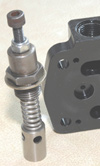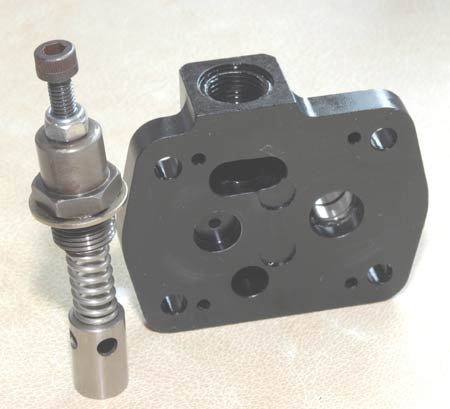The oil pressure relief valve, or when to leave it alone!
 In the world of automotive engineering there is a strong belief that unreliability creeps in when humans interfere. Take servicing the engine oil system, for instance.
In the world of automotive engineering there is a strong belief that unreliability creeps in when humans interfere. Take servicing the engine oil system, for instance.
Consisting of a pump, a filter, some bearings and one or two other components - not forgetting, of course, the oil - when assembled under the cleanest of conditions and serviced regularly to the same standards, we can expect the engine to last for the full design life (generally at least 150,000 miles, or 240,000 km) and possibly even much longer. The oil pump will pick up the oil from the sump and deliver the volume required, with the surplus returned to the sump via the oil pressure relief valve (PRV). As the engine gets warmer or the speed increases, the oil volume demanded will increase, and to maintain the overall system pressure, less oil will be discharged back to the sump.
The problem arises when - or should I say, if - the demand for oil is greater than that supplied by the pump and when the PRV remains closed. At such a time the pressure in the system will fall. Designed correctly and compensating for the small amount of wear that will inevitably take place, this will normally only happen at very low engine speeds, when high oil pressure is seldom required.
But if, say, the owner or garage puts in a slightly thicker oil than that recommended - a 10W/60 instead of a 10W/40 or 0W/40 for example - then at a given temperature and relief valve pressure setting, the increase in back pressure caused by the thicker oil will cause a larger amount of oil to be returned through the PRV back to the sump. In most instances, so long as the lubricant gets to all the critical parts and readily drains back to the sump then little real harm may take place, but if say the relief valve couldn't cope with the extra volume of oil returned or if, once through the valve the flow effectively 'choked' in the return pipe, then the pressure to the engine oil system could continue to increase. Not so worrying if this increase is only slight but potentially catastrophic if it blew out an O-ring or an oil filter seal somewhere in the system.

The use of higher viscosity oils, however, can introduce other issues as well. In one engine I can remember, approved only for use with 10W/40 oils, filling with a 10W/60 caused the relief valve - which rarely saw such an opening with the correct grade of oil - to jam wide open at high speed. Naturally, when the engine returned to idle and since the PRT was still wide open, the gallery oil pressure simply disappeared. This particular issue was eventually solved at the design stage when the casting length supporting the relief valve stem was lengthened, such that jamming in its locating bore became impossible thereafter. It's a reminder that occasionally designers can get things wrong, but it sometimes takes the actions of the uninformed to highlight it.
Thankfully, most OE engines no longer give access to the PRV since it remains hidden somewhere deep inside the pump. But when these valves are fully accessible, particularly in those systems using an externally mounted dry sump, serious problems can arise. In one incident, the customer of a well-respected pump supplier installed his pump as per the maker's instructions and adjusted the relief valve pressure to 80 or 90 psi, when the engine was hot and at idle speed. Switching off the engine and retiring for the evening, he came back the following morning when the engine had cooled down and the ambient temperatures had fallen to single figures. Upon firing the engine again, the gallery oil pressure simply went off the end of the gauge and oil proceeded to spurt out through the seals and all across the engine bay.
To err, they say, is human but to really make a mess takes a gallon or so of engine oil.
Fig. 1 - The working parts of the oil pressure relief valve
Written by John Coxon